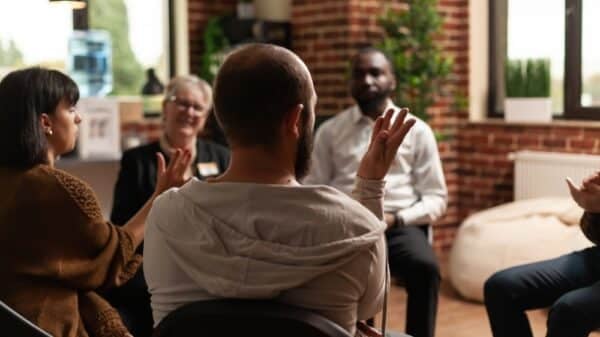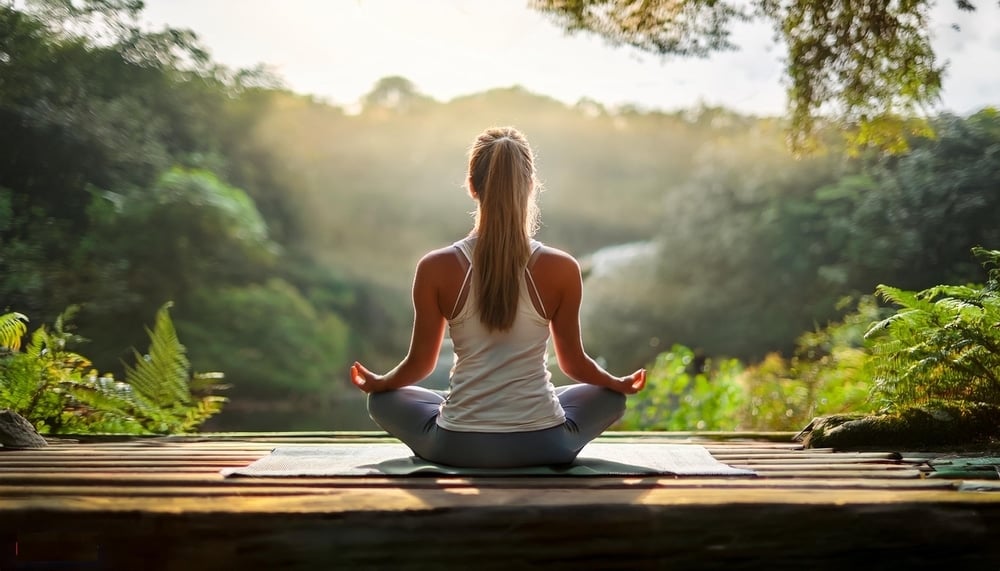After an intense session of “yoga sculpt,” which felt more like a boot camp than a wellness retreat—think of a seemingly endless stream of push-ups that had me questioning whether I’d be able to stand up the next day—I rushed to meet my friend for lunch. Even after a quick shower, the sweat lingered, clinging to my skin as proof of my exertion. I braced myself for her inevitable inquiry about my workout, torn between wanting to confess that I had just finished a class that blended yoga with weights and bursts of high-energy cardio, or maintaining my usual zen persona from our days together in teacher training.
It’s been 15 years since we first crossed paths during our yoga teacher training. Over the years, we’ve shared countless discussions over the nuances and philosophies of yoga. We’ve dove into questions like: How does one modify crescent pose for someone nursing a knee injury? And is it considered respectful to sprinkle in a bit of Sanskrit during a class? Her teaching approaches typically embrace the core principles of yoga, including a solid segment dedicated to breathwork and even some mantra chanting in Sanskrit. This contrasted sharply with today’s class, which buzzed with thumping Lady Gaga tracks and incorporated burpees, bicep curls during warrior poses, and deadlifts woven into downward-facing dog. In that moment, reflecting on nearly 20 years of personal practice and a year spent training as a teacher, I began to feel disconnected from what I used to perceive as the true essence of yoga.
“Wow, why is your face so flushed?” she asked, genuine curiosity in her eyes. “Did you go for a run or something?” I hesitated before finally admitting, “Actually, I was at yoga sculpt.” The moment I uttered those words, I could see her expression shift—disappointment flickered across her face.
“Why would you do that?” she asked slowly. “You know that’s not… what we’d consider real yoga.”
Is there such a thing as “real” yoga? For many in the yoga community, this is a question that stirs up a lot of debate, often leaving practitioners feeling trapped between traditionalist viewpoints and modern adaptations. The idea of “real yoga” implies there’s a sole, authentic way to practice, which can unfairly suggest that any deviation is somehow inferior. With the explosion of yoga styles and hybrid classes over the last few years, defining what is “real” has become a remarkably intricate challenge.
“Yoga is more than just a physical practice—it’s a holistic way of life,” explains Kate Lombardo, a seasoned yoga instructor and co-owner of YogaRenew. “While I understand the viewpoint that adding in different elements could dilute its essence, I firmly believe that if more people could connect with the grounding and serenity yoga offers, it would benefit everyone involved.”
Lombardo emphasizes the importance of honoring yoga’s historical roots, yet she also advocates for flexibility in interpretation. “It’s absolutely okay to meet people where they are,” she states. “I wouldn’t want anyone to feel discouraged from joining a class because they think they need to be deeply spiritual or philosophical to participate. A balanced approach that honors various traditions while making yoga accessible is crucial in today’s world.”
What about the fringe hybrid classes that blend yoga with high-intensity workouts? They might seem gimmicky at first, but research suggests they hold their own weight. A recent study from BetterMe found that 42 percent of participants noted new workout formats as a major motivator to stay active.
“Combining various forms of exercise can enhance an overall fitness routine,” explains Victoria Repa, a certified health coach and founder of BetterMe. “Yoga focuses on strength, stability, and flexibility—but merging it with cardio or resistance training can lead to more pronounced physical gains than sticking strictly to yoga practices.”
Hybrid classes can also play a pivotal role in introducing yoga postures to those who are brand-new to the yoga scene while offering seasoned practitioners the chance to bolster their strength training and cardiovascular health, as demonstrated by Jessica Feldman, an instructor at Life Time. “In my Warrior Sculpt classes, we incorporate breathwork and grounding exercises, and we still wind down with the cherished savasana,” she explains. “Mixing in weights and jumping jacks pushes our students out of their comfort zones. Whether they come from a group fitness background or strictly yoga, everyone’s learning new movement techniques that enhance their balance, coordination, and overall mobility.”
Karen Verechia, a yoga instructor incorporating TRX into her classes, believes that these blended formats invite individuals from diverse fitness backgrounds to discover their physical limits while nurturing their awareness. “Yoga helps establish a vital mind-body connection, which cultivates a sense of presence and mindfulness,” she shares. “Bringing that into other fitness spaces allows participants to absorb the best elements of yoga while diversifying their movement practice. Yoga has always encouraged a ‘beginner’s mind,’ so why should hybrid classes stray from that principle?”
At lunch, reflecting on my friend’s “not real yoga” comment, I felt a wave of realization wash over me: my views on the evolution of yoga have shifted significantly in recent years. I’ve come to embrace the idea that yoga should evolve to meet contemporary needs. Sure, some trends—like goat yoga or brewery yoga—might seem a bit offbeat, and there’s certainly merit to those who cherish the roots of the practice, complete with chanting and philosophical discussions. However, I feel that embracing this broader, more inclusive approach allows yoga to flourish and invites a wider audience to explore its depth.
In adopting this mindset, perhaps we can all carve out our definitions of what “real” yoga means to us personally, approaching it in ways that enrich our lives and our communities instead of erecting barriers that may keep others from engaging. After all, I often tell my students that their yoga journey is uniquely theirs—every practitioner has their path, and comparing journeys can strip away what should be joyous and fulfilling. By opening our hearts and minds to a more inclusive understanding, we simply create a welcoming space for everyone to engage with yoga in their own way. Who knows? They might even discover they love sweating it out to “Bad Romance” as much as they enjoy a serene savasana.
































